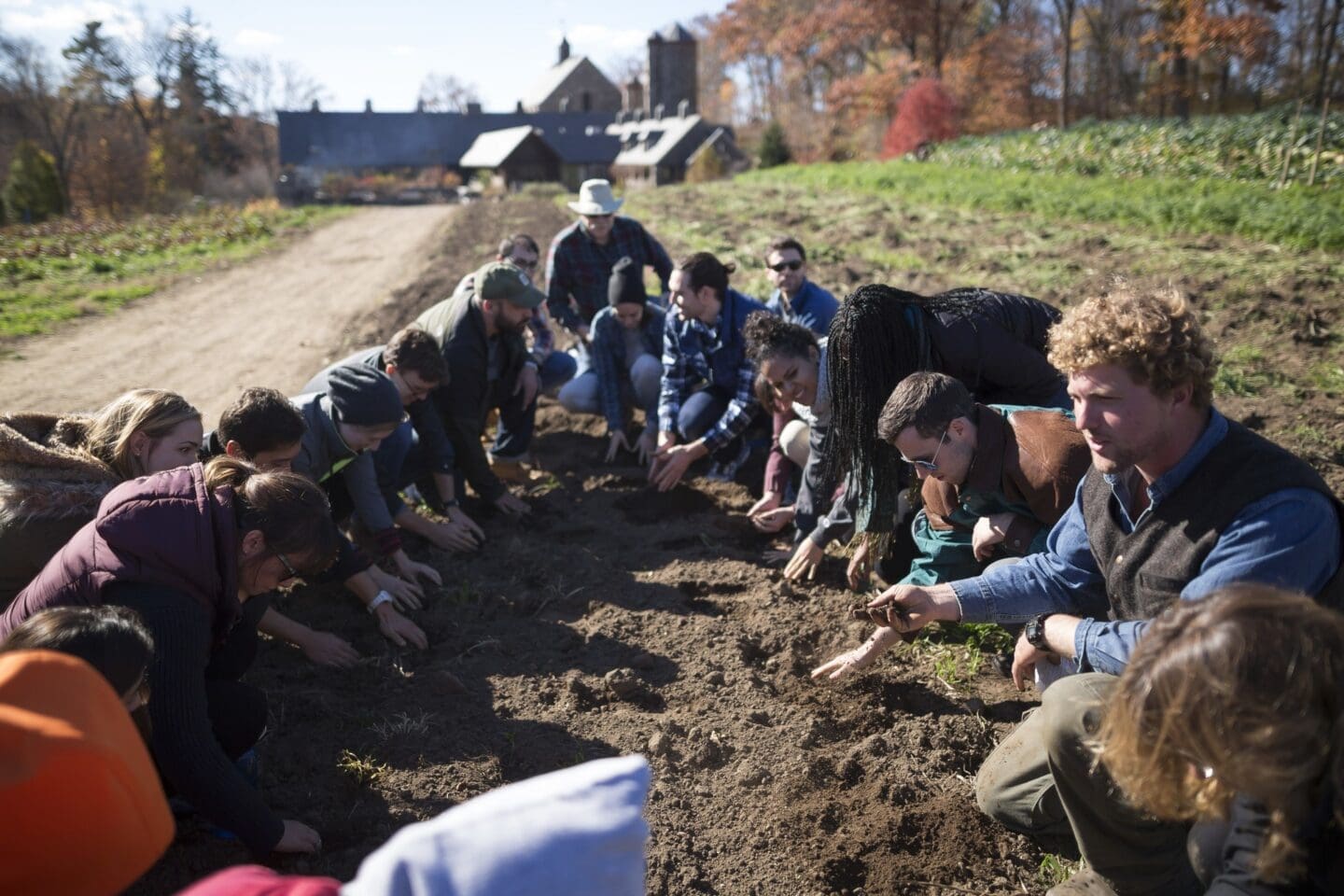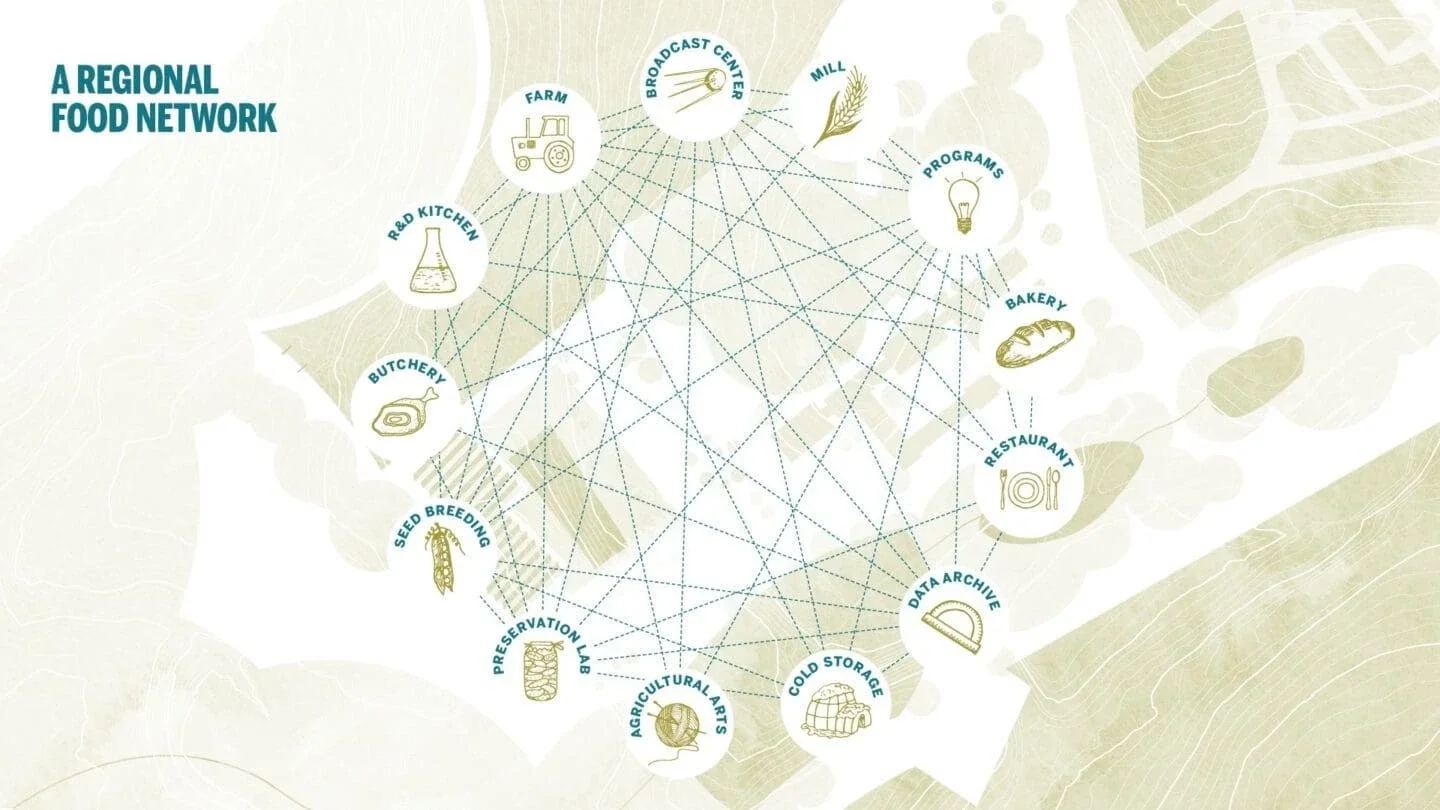Before the Covid-19 pandemic, the Hudson Valley’s food system was supporting independent farmers and chef-led restaurants across the region, but it remained beset by obstacles that prevented it from reaching its potential. Farmers were not encouraged or incentivized to adopt regenerative practices that focus on the needs of the soil and ecosystem; chefs had to compete on race-to-the-bottom pricing for valuable ingredients: and high prices for consumers meant that healthy, delicious food was out of reach for millions in the region.
The Vision for 2050 transforms the Hudson Valley food culture to one that responds to the needs of the community and provides accessible, delicious and nutritious food that is culturally relevant, while also supporting healthy soils and ecosystems and a thriving farming economy. In the Vision, farmers, chefs, and community members embrace a food system that combines modern science and innovation with respect for nature and biodiversity.
Hudson Valley is a national heritage region as designated by the United States Congress in 1996. Located along the Hudson River in New York state, it is home to the Stone Barns Center, a beacon of culinary innovation and agricultural research and development.
Hudson Valley is one of the most diverse foodscapes on the planet, but its food movement lacks adequate recognition of the influence and traditions of local Indigenous, African, and immigrant communities. Diet, nutrition, and access to healthy foods are challenges that were exacerbated by the onset of Covid-19. High prices mean that nutritious food is out of reach for millions of community members, and more than 1 in 10 people across the region face food insecurity.
As the pandemic took hold in March 2020, chef-led restaurants were suddenly shuttered and regional independent farmers who had spent decades building up healthy soil and specialized produce saw their market wiped out overnight. These farmers were tilling crops under, culling animals in their fields, and dumping milk for lack of cold storage and transportation, while millions of people went hungry.
The Hudson Valley, New York Vision showcases how by the year 2050:
- Groundbreaking research on ecologically sound farming and food production takes place within an interconnected web of Stone Barns Center Labs, and progress and learnings reach all stakeholders in the food system via data and storytelling.
- Farmers have deep relationships with chefs and other local culinary and craft businesses, who design menus and products around the most important drivers of ecological agriculture: diversified grains and vegetables, cover crops, climate-adaptive perennials, and regeneratively grazed animals.
- Regenerative farming is a common practice for small and medium-sized farms.
- Hudson Valley families have access to an affordable and more nutritious local diet, improving health and building a stronger connection between the community and their environment.
- An ecological food culture, supported and encouraged through market demand, has taken root in the Hudson Valley.
In response to the Covid-19 pandemic and economic downturn in 2020, Stone Barns launched resourcED, a program to support Hudson Valley’s independent food movement during the crisis and beyond. The resourcED program will help to power the Vision for 2050.

The Vision for Hudson Valley demonstrates that there is a need for a renewed food culture that is reflective of place, season, and community. The Stone Barns Center for Food and Agriculture has served as a training ground and a leading example of how farm and table can work hand-in-hand.
Click here to explore the full Vision for Hudson Valley in the year 2050.
Our Vision uses change in food culture to reshape the food economy from a linear, transactional system into a networked, circular one that benefits practitioners, consumers, communities and the Earth. We work at the intersection of farmers and chefs to activate critical opportunity areas of impact in ecological and human health, farm economies and other elements of a thriving food system.
